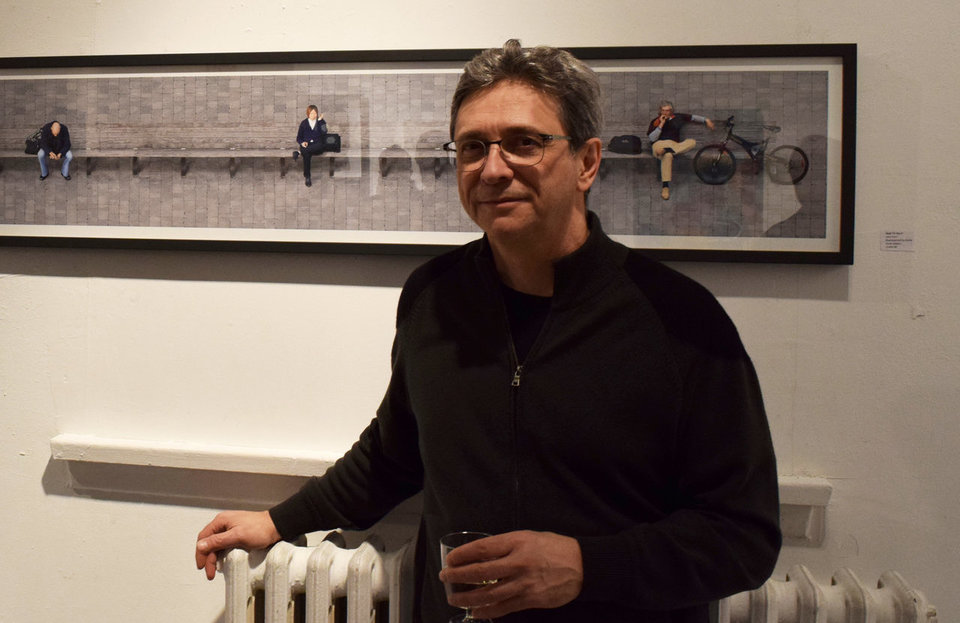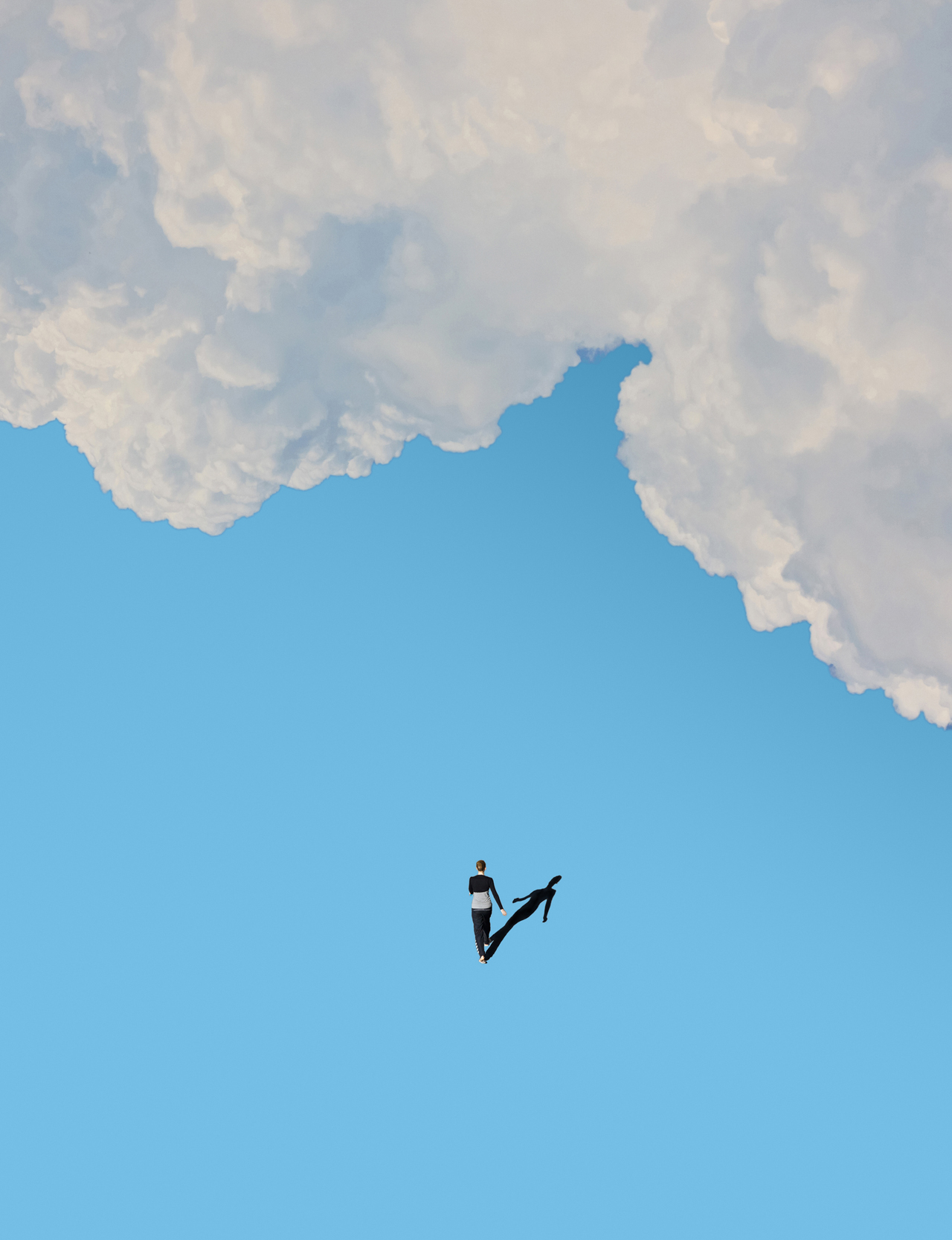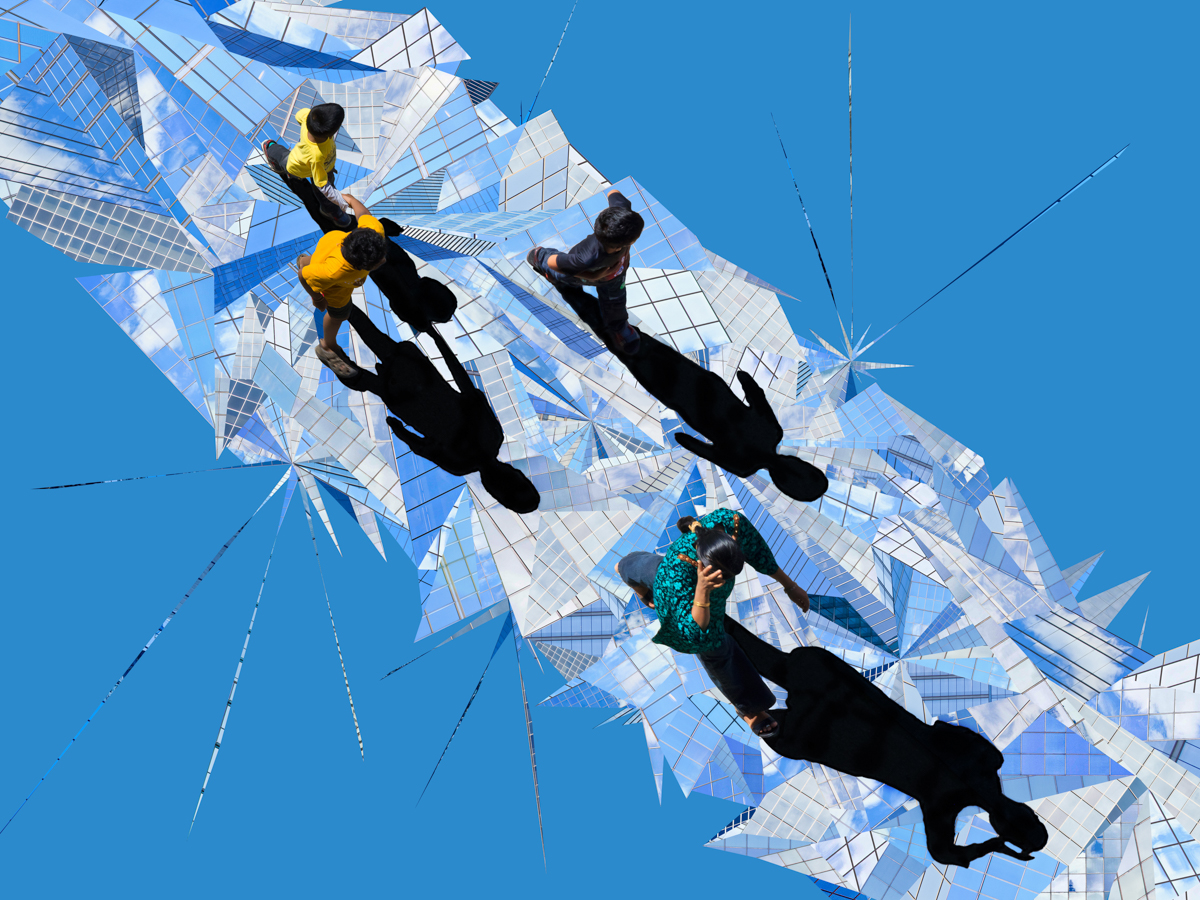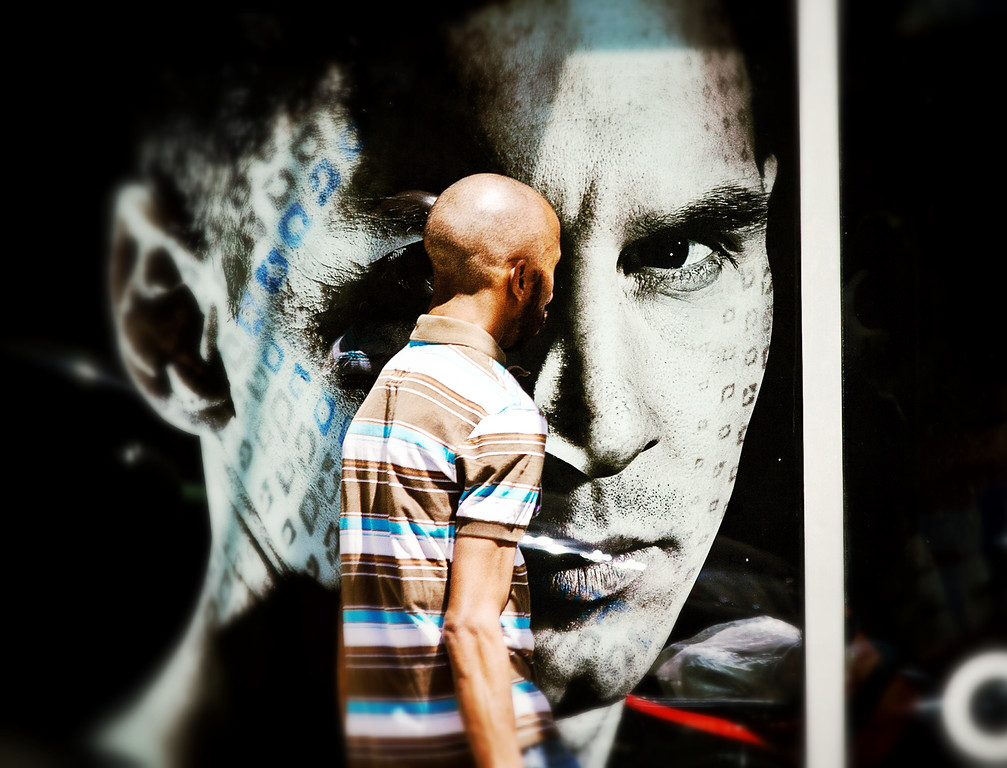 John Ferri at the 20th Anniversary Celebration of Gallery 1313, January 2017. Photo: Simon Termine
John Ferri at the 20th Anniversary Celebration of Gallery 1313, January 2017. Photo: Simon Termine
Interview with John Ferri (JF) by Emese Krunák-Hajagos (EKH)
John Ferri’s latest exhibition Walking on Glass is currently on display at Elaine Fleck Gallery.
EKH: The first work I saw from you was from the series: Next to You (2014) at Gallery 1313. It was in a group show but made me stop right on the spot. I had to have a closer look at those people and try to figure out their relationships. It also brought up questions about the making of if it: was it a spontaneous shot, staged or montaged. How did you get the idea for these images and how did you make them?
JF: I live in Toronto and my building overlooks a bench. I watched people on that bench almost daily and became fascinated by the interplay between them. I began to notice patterns. For instance, women when they sat together would often cluster inward in semi-circles to face each other. Men generally would gaze into the distance, even while talking to the person next to them. People, even when by themselves, would sit at the furthest end of the bench, making room for missing souls. I realized that they used public space to both congregate and insulate. And, that either way, multiple narratives emerged. So there’s certainly a spontaneity to their actions but the images themselves are constructions. The benches are stretched across a panoramic space to make room for these narratives.
 John Ferri, from the series Next to You, 2014. Courtesy of the artist
John Ferri, from the series Next to You, 2014. Courtesy of the artist
EKH: People are always present on your photographs – maybe that’s why I like them. It seems that you are interested in their relationships, and in social issues. Could you please tell us more about your thoughts and your artistic philosophy?
JF: I spent many years as a journalist whose duty – by obligation and inclination – has been to look at life in the biggest city in this country. But I’m also from a small town, which means that like everyone else who was not born here, I’m an outsider. And, as a journalist, you are best to be an outsider. The most effective stories are told from the outside looking in. But, as a journalist, you are also aware that stories are not abstract – they have human beings at their heart. How we get along in the city is the centre of all our narratives. The people in my work are us – we are dwarfed and dazzled, and often we are alone, even when we’re with others – but we make our way in the world as everyone always does. I think it’s kind of heroic. It’s our human scale that gives dimension to the glass towers that surround us – not the other way around. My work is a way of saying we are here, we have assembled this life, and this is what ‘here’ looks like. We may be strangers, and we may be alone, but it is a glory that we thrive and survive.
EKH: In Circles, another series (2016), images are crowded with people who are moving around until they create layered circles. Movement is another key element in your work. Why is that and how do you construct it?
JF: I shot those images from the same vantage point over a period of about two years. My initial impulse – as in all my work – was observational. I’m fascinated by movement, in the subtle choreography of an act as simple as walking. I photographed each person individually but, if seen in the aggregate and over time, they moved in unison. I wanted to capture that. So I timed my shoots so that the angle of the shadows began to match. There’s some manipulation – tilting and density – to create a consistency that’s pleasing to the eye and to bring together the aesthetic and narrative elements.
 John Ferri, Circle In Blue Square, from the Circles series, Archival Inkjet Print Facemounted To Plexiglass. 36 x 36 “. Courtesy of the artist
John Ferri, Circle In Blue Square, from the Circles series, Archival Inkjet Print Facemounted To Plexiglass. 36 x 36 “. Courtesy of the artist
EKH: I saw your Air Show, yet another series at Gallery 1313, in 2015. A surprise again, since these compositions are almost empty with an overwhelming blue sky, some occasional clouds and a solitary figure. They are real and surreal at the same time. The figures all have shadows but it still feels like that they are in the air. What inspired you and how were they realized?
JF: I became concerned about the aloneness you see in public places. So these solitary figures floating in space expressed that. Their vulnerability in the circumstance is a thing of beauty. I think it also works as a counterpoint to the fact that, increasingly, most images taken of us in public spaces are the result of the darker motivations of the surveillance culture – which promises protection but implies a threat. In stripping away all but essentials – leaving only a familiar object against a gradient sky – I was seeking to sharpen the focus on human narratives, not institutional ones.
 John Ferri, from the Air Show 2, 2015 Archival Inkjet Print Facemounted To Plexiglass, 24 x 31. 25″. Courtesy of the artist
John Ferri, from the Air Show 2, 2015 Archival Inkjet Print Facemounted To Plexiglass, 24 x 31. 25″. Courtesy of the artist
EKH: Walking on Glass, your current show is amazing. Broken glass, not to mention walking on them, can hurt. But not in your photographs. They become beautiful crystals that reflect the light, group into flower-like structures creating an enchanting design. Where did all this magic comes from?
JF: We live in a city increasingly defined, at least visually, by glass. It plays with the light which can be mesmerizing. It’s both fragile and hard at the same time. It reflects and shapes our daily lives. I wanted to explore these attributes. I liked the idea of taking apart the familiar and reassembling it, anchoring everyday realities and concerns in pure abstraction.
 John Ferri, Bridge, from the Walking on Glass series, 2017, Inkjet print on Archival paper, 48 x 36″. Courtesy of the artist
John Ferri, Bridge, from the Walking on Glass series, 2017, Inkjet print on Archival paper, 48 x 36″. Courtesy of the artist
EKH: There are two categories on your website: Composites and Photographs. They both seem to be collages and combined images – why the two categories, what’s the difference between them?
JF: In the context of what else I do, I can see how the work in the photographs category might look constructed. But it’s not. Those photos are absolutely as shot. I think what’s interesting is that they are consistent with those that are pure manipulation. The only difference, at least in terms of the Giant Humans series, is that they are at street level. In a way, they’re kind of a proof of concept by asking the same essential question: how do we maintain our sense of place and dignity as human beings when juxtaposed against forces larger than ourselves?
 John Ferri, from the Giant Humans series, 2014. Courtesy of the artist
John Ferri, from the Giant Humans series, 2014. Courtesy of the artist
EKH: Lately you are getting more recognition: the Elaine Fleck Gallery, and being invited to SNAP auction etc. What comes next for you?
JF: I had my first solo show last fall at Akasha Art Projects. I’m now represented by the Elaine Fleck Gallery. I feel very fortunate about the here and now. My goal in the near term is to continue exploring the concepts that interest me, in particular walking on glass. I’m definitely not done with that.
*Exhibition information: May 4 – 28, 2017, Elaine Fleck Gallery, 1351 Queen St. West, Toronto. Gallery hours: Mon, Wed, Thur & Fri: 12 – 6 pm, Sat: 11 am – 6 pm.



Congratulations John. You are an amazing photographer